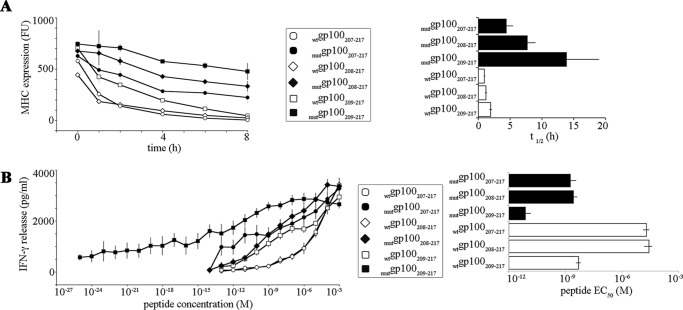FIGURE 6.
Presentation to and recognition by CD8+ T cells of the gp100209–217 epitope and its N-terminally extended peptides is affected by the T210M substitution. A, binding to the HLA-A*02:01 molecule; the stability of the complex MHC class I bound to the wt and mut gp100207–217, gp100208–217, and gp100209–217 peptides is shown. The MHC class I-peptide stability was measured by pulsing the synthetic peptides onto T2 cells (expressing the HLA- A*02:01 molecule) over time and by assessing the HLA-A*02:01 expression on the cell surface by FACS analysis. The t½ of the HLA-A*02:01-peptide is reported in the panel. Values are the mean, and bars are the S.E. of two independent experiments measured in duplicate. FU, fluorescence unit. B, CTL response; IFN-γ release by gp100209–217-specific PBLs triggered by HLA-A*02:01-expressing K652 cells pulsed with synthetic peptides. The EC50 (concentration of peptide triggering half of the measured maximal PBL response) is reported in the right panel. Values are the means, and bars are the S.E. of independent experiments (n = 5–16) measured in duplicate.

